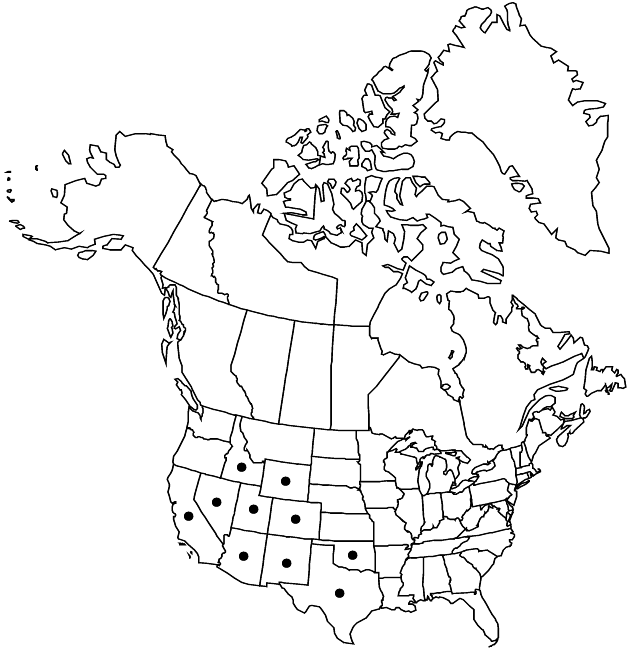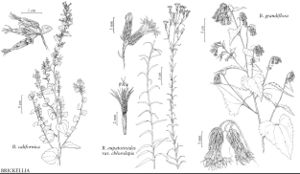Brickellia californica
Mem. Amer. Acad. Arts, n. s. 4: 64. 1849.
Shrubs, 50–200 cm. Stems branched from near bases, glandular-pubescent. Leaves alternate; petioles 5–60+ mm; blades 3-nerved from bases, ovate to deltate, 10–100 × 10–90 mm, bases cordate to truncate, margins crenate to serrate, apices acute to rounded, faces puberulent to glabrate, often gland-dotted. Heads borne in (leafy) paniculiform arrays. Peduncles 1–5 mm, glandular-pubescent. Involucres cylindric to obconic, 7–12 mm. Phyllaries 21–35 in 5–6 series, greenish, often purple-tinged, 3–4-striate, unequal, margins scarious; outer ovate to lance-ovate (glabrous or sparsely glandular-pubescent, apices acute to acuminate), inner lanceolate (glabrous, apices obtuse to acuminate). Florets 8–12; corollas pale yellow-green, 5.5–8 mm. Cypselae 2.5–3.5 mm, puberulent; pappi of 24–30 white, barbellate bristles. 2n = 18.
Phenology: Flowering Jul–Oct.
Habitat: Dry, rocky hillsides, arroyos, canyons
Elevation: 800–2700 m
Distribution

Ariz., Calif., Colo., Idaho, Nev., N.Mex., Okla., Tex., Utah, Wyo.
Discussion
Floret number of 18 is reported for Brickellia californica in most floras; A. Cronquist (1994) noted that 18 is high by his count; he reported 12 as the maximum number for the specimens he sampled and that fits the specimens I have counted from Arizona.
Selected References
None.
